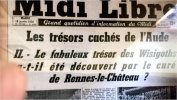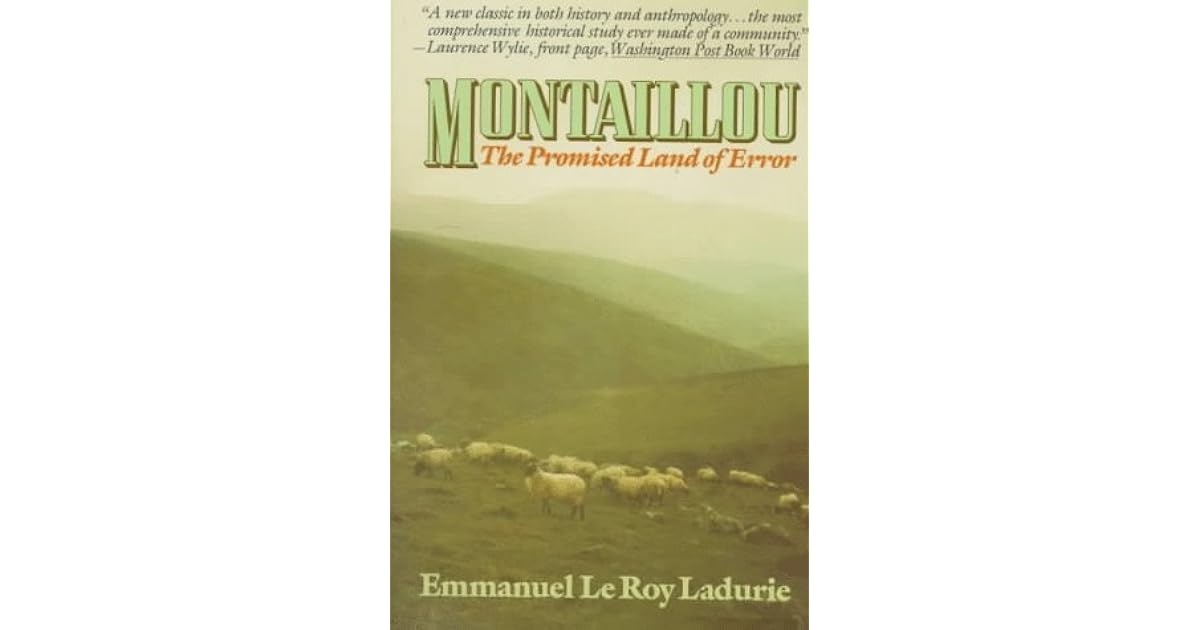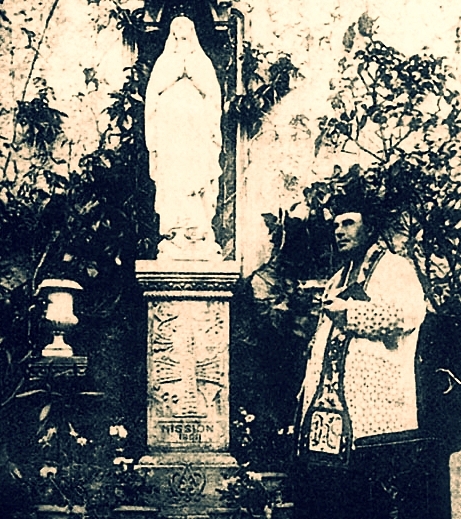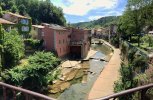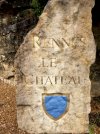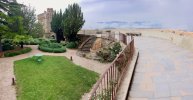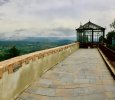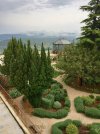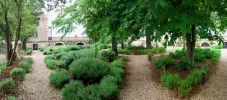- Jan 19, 2013
- 1,619
- 4,613
- Time of past OR future Camino
- VdlP(2012) Madrid(2014)Frances(2015) VdlP(2016)
VdlP(2017)Madrid/Sanabres/Frances reverse(2018)
Last year, cycling part of the Voie des Piémonts from SE France, I detoured south of Carcassonne to the village of Rennes le Chateau. It's a place of some notoriety, not least because it featured prominently in a 1980's best-seller called The Holy Blood and the Holy Grail, a completely over-the-top conspiracy theory opus, which allegedly inspired Dan Brown to write his best selling - and even more outlandish - The Da Vinci Code.
However, Rennes Le Chateau is a deliciously mysterious place, steeped in very real history. There used to be a Visigoth castle here, and it was for a time the “capital” of a small Visigoth kingdom. The top of the mountain had been a Celtic sacred site, and the Romans apparently sited small temple of Isis there. The Visigoths built a Christian chapel on the site in the 6th century. The present church was built on top of that in early medieval times and retained a few elements of it.
Now, in 1885 a new young priest ofvery limited means was appointed to this little parish, Abbé Saunière. For some years he lived a quiet life on his isolated mountain ministering to his 80 parishioners, supported by a tiny stipend. The old church was very delapidated by then, and he started some simple renovations. In the process he took off the altar stone, which rested on two stone Visigoth pillars from the original chapel. One of them was hollow, and inside he found parchment documents, some supposedly written in code. At the same time his bell ringer found a glass vial containing a document concealed inside a hole under the wooden ballustrade of the pulpit stair. Saunière never revealed what he learned, (if anything) from these discoveries.
But we do know that he became a very wealthy man almost overnight. He completely renovated the church, built himself an impressive mansion/presbytery, with an orangery and formal garden, then a sort of folly, a look-out called the Tour Magdala, and he even paid for the construction of a road up to the village, (which was handy for me).
The tower was a homage to Mary Magdalen, and the church itself is named after her.
Apparently he must have spent millions of francs on his renovations and building programs. The place is a gem.
When the Bishop of Carcassonne found out about his profligate spending, he sacked him, but Saunière appealed to the Vatican and was reinstated. Much has been subsequently made of that fact. Skulduggery indeed!
The plot thickens here, because there is a curiously ubiquitous devotion to the Magdalene in France. One suggested origin for this dates back to, wait for it, the CATHARS, who revered her, and believed that she was the wife of Jesus, and had been smuggled out of Palestine and brought to southern France and safety after the events recounted in the Gospels.
Here it all gets a bit dodgy, because the legends in these parts dating back a thousand years associate Mary Magdalen with the Holy Grail, whatever that was.
Enter some 20th century French and British researchers who maintained that the Holy Grail was in fact Mary’s child by Jesus. Then along comes Dan Brown, who rips off their ideas with his Da Vinci Code nonesense . (A couple of writers sued him, and lost at a trial at the Old Bailey).
It’s all a big mystery, and even the Knights Templar are mixed up in it too. A grand master of the Templars had an estate nearby, and no one knows what happened to the Templar treasure after they too were eradicated by the French King in the 14th century. (Accused heretics again, and certainly the order was fabulously wealthy). Was this the source of Saunière’s wealth?
I’d better shut up. I hope that wasn’t too incoherent.
Some pics.

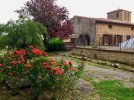
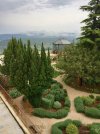
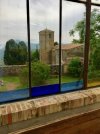
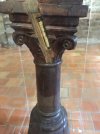
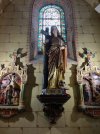



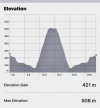
However, Rennes Le Chateau is a deliciously mysterious place, steeped in very real history. There used to be a Visigoth castle here, and it was for a time the “capital” of a small Visigoth kingdom. The top of the mountain had been a Celtic sacred site, and the Romans apparently sited small temple of Isis there. The Visigoths built a Christian chapel on the site in the 6th century. The present church was built on top of that in early medieval times and retained a few elements of it.
Now, in 1885 a new young priest ofvery limited means was appointed to this little parish, Abbé Saunière. For some years he lived a quiet life on his isolated mountain ministering to his 80 parishioners, supported by a tiny stipend. The old church was very delapidated by then, and he started some simple renovations. In the process he took off the altar stone, which rested on two stone Visigoth pillars from the original chapel. One of them was hollow, and inside he found parchment documents, some supposedly written in code. At the same time his bell ringer found a glass vial containing a document concealed inside a hole under the wooden ballustrade of the pulpit stair. Saunière never revealed what he learned, (if anything) from these discoveries.
But we do know that he became a very wealthy man almost overnight. He completely renovated the church, built himself an impressive mansion/presbytery, with an orangery and formal garden, then a sort of folly, a look-out called the Tour Magdala, and he even paid for the construction of a road up to the village, (which was handy for me).
The tower was a homage to Mary Magdalen, and the church itself is named after her.
Apparently he must have spent millions of francs on his renovations and building programs. The place is a gem.
When the Bishop of Carcassonne found out about his profligate spending, he sacked him, but Saunière appealed to the Vatican and was reinstated. Much has been subsequently made of that fact. Skulduggery indeed!
The plot thickens here, because there is a curiously ubiquitous devotion to the Magdalene in France. One suggested origin for this dates back to, wait for it, the CATHARS, who revered her, and believed that she was the wife of Jesus, and had been smuggled out of Palestine and brought to southern France and safety after the events recounted in the Gospels.
Here it all gets a bit dodgy, because the legends in these parts dating back a thousand years associate Mary Magdalen with the Holy Grail, whatever that was.
Enter some 20th century French and British researchers who maintained that the Holy Grail was in fact Mary’s child by Jesus. Then along comes Dan Brown, who rips off their ideas with his Da Vinci Code nonesense . (A couple of writers sued him, and lost at a trial at the Old Bailey).
It’s all a big mystery, and even the Knights Templar are mixed up in it too. A grand master of the Templars had an estate nearby, and no one knows what happened to the Templar treasure after they too were eradicated by the French King in the 14th century. (Accused heretics again, and certainly the order was fabulously wealthy). Was this the source of Saunière’s wealth?
I’d better shut up. I hope that wasn’t too incoherent.
Some pics.














